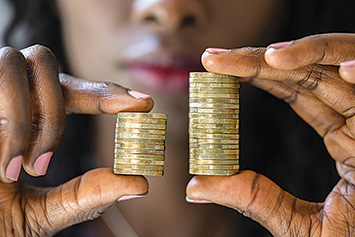Women have to work nearly 15 months to earn what men make in 12

March 14 was Equal Pay Day, which in the U.S. is the day that women’s pay catches up to what men made in 2022.
According to the U.S. Government Accountability Office, women have to work nearly 15 months to earn what men make in 12 months, or approximately 82 cents for every dollar a man earns. For Black women it’s about 65 cents; for Latina women it’s 60 cents, according to National Public Radio.
When part-time workers are included with full-time workers, the number drops to 77 cents for a woman to $1 for a man.
“Women deserve equal pay for equal work. Period,” Illinois Gov. JB Pritzker tweeted on March 14, and Lt. Gov. Juliana Stratton pointed out that women make up 51 percent of the population but will have to work 2.5 months more to earn what a man made.
“We shouldn’t have Equal Pay Day in 2023,” Stratton tweeted.
She added that for Black women, Equal Pay Day is July 27; Oct. 5 for Latina women; and for Native and Indigenous women, Equal Pay Day is Nov. 30.
FARE GRANT PROGRAM
The Illinois Department of Labor commemorated Equal Pay Day by highlighting the FARE grant program, which stands for Fostering Access, Rights and Equity. The grant is aimed at helping low-wage women workers learn about and access employment rights and benefits.
The state selected Women Employed – a 50-year nonprofit supporting working women – as its lead partner to strengthen enforcement of pay equity and other employment protections. The program holds trainings and job fairs across the state, digital advertising on social media, a billboard on the Kennedy Expressway and a multilingual outreach plan that includes tip sheets in eight languages.
“We are realizing incredible results with the FARE grant program and are reaching workers across Illinois who have never before been engaged in their workplace rights,” said Jane Flanagan, director of the Illinois Department of Labor. “I’m grateful to our statewide partners, especially Women Employed, for their time and dedication to bringing equal pay rights to the masses.”
Other grant partners have included the Shriver Center on Poverty Law and YWCA Quad Cities.
GENDER PAY GAP HASN’T CHANGED IN TWO DECADES
Despite this work, the gender pay gap hasn’t changed in two decades, according to research from the Pew Research Center released in March 2023. The results are pretty much the same as they were in 2002, when women earned 80 percent as much as men.
And in the St. Louis metropolitan area, it’s slightly worse than the national average: women over age 16 earn approximately 78 percent of what men their age earn, according to the Pew Center. That puts St. Louis ranking No. 183 out of 250 metropolitan areas for pay disparity.
In fact, although women have increased their presence in higher-paying jobs traditionally dominated by men, Pew’s report shows that women as a whole are overrepresented in low-paying occupations, contributing to the gap in their pay.
Men and women also have significantly different impressions about why the disparity exists. Women are much more likely than men to say that employers treat women differently, and parents with young children are more likely than non-parents to say that the reason is women making choices about balancing family and work. Democrats are more likely to say that employers treat women differently than Republicans, and Republicans are more likely to say that women choose to work in jobs that pay less.



Leave a Reply